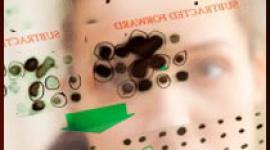Late-Life Bipolar Disorder Guidelines and Challenges
Bipolar disorder in geriatric populations and which bipolar medications are effective for treating seniors with bipolar.
"With respect to bipolar disorder in geriatric populations, we, in fact, do not have published guidelines," began Martha Sajatovic, MD, in her address at the 17th Annual Meeting of the American Association for Geriatric Psychiatry. While there are guidelines for the treatment of bipolar disorder in general populations, these guidelines are "certainly not cookbooks for clinicians but really offer us some guideposts and helpful recommendations for a very complex condition in our patients," she acknowledged.
But what do the guidelines, such as those published by the American Psychiatric Association, the Veterans Administration (VA), and the British Association for Psychopharmacology, say about treatment for late-life bipolar disorder? Dr. Sajatovic cautioned that this sizable patient population has unique issues, since older individuals who develop bipolar disorder may have a new-onset form of the illness. "We can estimate, based on existing data, that the prevalence rate is 10% in individuals older than 50. And that surprises a lot of people who have the idea it is a rare bird."
No Data, Just the Facts
While treatment for older patients may follow the same principles as for other patient groups, there is a severe scarcity of data specific to late-life bipolar disorder, explained Dr. Sajatovic, who is Associate Professor in the Department of Psychiatry at Case Western Reserve University School of Medicine, Cleveland. "In fact, if you look at treatment guidelines, they really only address the care of older people with bipolar disorder in very general ways. A lot is speculation. What we do not have are clear and specifically focused treatment guidelines for bipolar disorder in later life."
What happens in the absence of clear, evidence-based guidelines? She cited a study by Shulman et al in which his team analyzed community prescription trends in individuals older than 66 from an Ontario, Canada, drug benefit program from 1993 to 2001. "Very interestingly, during that time period, the number of new lithium prescriptions fell from 653 to 281. The number of new valproate users went from 183 to over 1,000 in 2001.
"The number of new valproate users surpassed the number of new lithium users in 1997, so while the curve from the lithium was going down, the curve for the valproate was going up, and crossed in 1997. This trend was seen even when patients with dementia were excluded from the analysis, so really, it was for late-life bipolar disorder. Clearly, clinicians and patients are talking with their feet here. We do not have data that say this is what you should do, but this is what's happening."
VA vs Community
 Dr. Sajatovic also reviewed a study of a VA psychosis registry, looking at bipolar disorder in the VA system and age-related modifiers of clinical care. Interestingly, she reported, there are more than 65,000 individuals in the VA database with bipolar disorder, and more than a quarter are older than 65. "You don't have to be a statistician to figure out where we're going with this. There are a large number of individuals who are progressing into a later-life diagnosis of bipolar disorder."
Dr. Sajatovic also reviewed a study of a VA psychosis registry, looking at bipolar disorder in the VA system and age-related modifiers of clinical care. Interestingly, she reported, there are more than 65,000 individuals in the VA database with bipolar disorder, and more than a quarter are older than 65. "You don't have to be a statistician to figure out where we're going with this. There are a large number of individuals who are progressing into a later-life diagnosis of bipolar disorder."
Once the bipolar disorder group was identified, Dr. Sajatovic focused on their drug treatment patterns, which contrasted with those of Shulman et al's findings. Individuals were stratified into three age-groups: 30 and younger, 31 to 59, and 60 and older. She found that 70% of patients who had been prescribed a mood stabilizer were receiving lithium. "In the VA system, lithium was the mood stabilizer of choice, by a long shot. Very different from what's happening in the community," she noted. Dr. Sajatovic allowed that it was not clear if these were patients already being treated with lithium, or if the findings were a reflection of the VA population, which is followed for a longer time than a fragmented community sample.
The use of valproate was seen in 14% to 20% of the VA population, which is quite a bit lower than the use of lithium; carbamazepine use was similar to valproate. "There were a small number who were on two or more agents—again, different from a community sample where you see a lot more polypharmacy," she observed.
It is an interesting story, as well, with the use of antipsychotic medications, as Dr. Sajatovic reported that 40% of patients were prescribed oral antipsychotics. Olanzapine was the most commonly prescribed atypical antipsychotic in the VA system, across age-groups, followed by risperidone, although risperidone did not yet have an FDA indication for bipolar disorder.
The Pros and Cons of Lithium
Lithium is the most extensively studied medication for bipolar disorder in the elderly. It is an effective mood stabilizer in older adults and has an antidepressant effect with some patients, said Dr. Sajatovic. The frequency of acute toxicity with lithium in geriatric patients is reported to range from 11% to 23%, and in medically ill patients the rate can be as high as 75%.
Based on her experiences, Dr. Sajatovic made the following recommendations to clinicians: When prescribing lithium for the elderly, reduce the dose by one third to half of that given to younger patients; the dose should not exceed 900 mg/day. A baseline screening for renal function, electrolytes, and fasting blood glucose, as well as an EKG, should be conducted. "There is some controversy about target serum concentrations. What we know from the geriatric data is that patients who are at higher blood levels have better control of their bipolar disorder symptoms but are more likely to get toxic. So they are likely to tolerate lower blood levels and need to maintain their treatment with lower blood levels." Lithium can be a problem, especially at the higher blood levels, she said.
Other Agents - Valproate and Carbamazepine
Valproate is increasingly used for bipolar disorder by many clinicians as a first-line agent, "but again, we don't have controlled data. There are no randomized controlled trials in bipolar disorder that have been published." Though there are no controlled data for the use of valproate in secondary mania, Dr. Sajatovic recommended—after an EKG and screening for liver enzymes and blood platelets—a typical starting dose of 125 to 250 mg/day with a gradual dose titration. For patients with bipolar disorder, the usual dose range should be 500 to 1,000 mg/ day; patients with dementia may require lower doses.
Valproate is not without its dangers, she warned, especially at higher serum levels. A therapeutic range of 65 to 90 mg/day has been recommended in the literature. Carbamazepine is used with moderate frequency; although its side effects may be more problematic than those of valproate, it may be preferable to lithium in secondary manias, she explained. The screening is quite similar to that for valproate, and the appropriate dose is 100 mg once or twice daily and may be increased to 400 to 800 mg/day. "A little kicker about carbamazepine is that auto-induction may occur during the first three to six weeks and you may require an increased dosage during this timeframe. Check serum levels prior to doing that," Dr. Sajatovic advised.
What About Atypical Antipsychotics?
The VA database indicates that 40% of older patients are treated with antipsychotics; unfortunately, most reports are open label and retrospective, Dr. Sajatovic said. Clozapine, risperidone, olanzapine, and quetiapine have all been reported to be of benefit to elderly patients with bipolar disorder. All except for clozapine, she pointed out, have FDA approval for the treatment of bipolar disorder. Clozapine is used for treatment of refractory illness, primarily with mania. "We actually underutilize clozapine in refractory mania. And that's certainly true in the VA," she opined.
The use of lamotrigine is increasingly becoming an issue, and again, there are no data specific to lamotrigine, Dr. Sajatovic pointed out. According to data she presented at the American Psychiatric Association's 2004 annual meeting, it appears that older adults may tolerate lamotrigine better than lithium, which was not an unexpected finding, given the existing toxicity data. "The downside of lamotrigine is that you're not going to be able to titrate it quickly. You need a month to get people up to therapeutic doses." Accordingly, she does not recommend it as a first-line agent for mania, and studies do not support this use. "But particularly for people with recurrent bipolar depression, this could be a very nice compound," she allowed, and there are case studies published supporting its use in the elderly.
Should clinicians change patient medications based on concerns about side effects? "The party line of the British guidelines is to go with lithium unless there's a reason not to, such as side effects. US psychiatry appears to be a little more open to other agents, atypicals in particular, although some of this could be due to marketing forces. The point that there is no guarantee that a patient will respond to an atypical is valid."
Source: Neuropsychiatry Reviews, Vol. 5, No. 4, June 2004
next: Management of Mania in the Elderly
~ bipolar disorder library
~ all bipolar disorder articles
APA Reference
Staff, H.
(2009, January 10). Late-Life Bipolar Disorder Guidelines and Challenges, HealthyPlace. Retrieved
on 2025, November 29 from https://www.healthyplace.com/bipolar-disorder/articles/late-life-bipolar-disorder-guidelines-and-challenges



